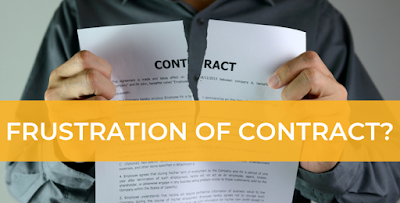‘The underlying purpose of the doctrine of proprietary estoppel is to prevent an unconscionable result.’ To what extent, if at all, is this an (a) accurate and (b) useful way of justifying the rules concerning both the generation of a proprietary estoppel claim and the fashioning of an appropriate remedy?
Proprietary estoppel is a method of informally acquiring rights in land. This essay will (1) outline the doctrine, (2) discuss the accuracy of the statement in relation to generating claims and fashioning remedies and (3) evaluate whether unconscionability represents a useful justification for the doctrine. Overall, the statement is accurate and conceptualising unconscionability as the justification of proprietary estoppel suitably reflects the nature of the doctrine.
(1) Proprietary Estoppel (PE)
Formality saturates land law. S2 LP(MP)A 1989 establishes minimum levels of formality required for creating or transferring interests in land, with s53(1) LPA 1925 similarly reflecting the focus on formalities in land law. Most interests require additional formalities such as deeds, and, for registered land, registration under ss.25-27 and Schedule 2 LRA 2002. Against this backdrop, the judge-made doctrine of PE is a noticeable exception to formality.
The doctrine can act as a defence (Mathura) or a cause of action (Kinane), thus representing both a shield and a sword (Crabb v Arun) in situations where formalities do not exist. A successful claim requires assurance, detriment and reliance (Thorner v Major) with Oliver J observing in Taylor Fashions that a claim arises where it is unconscionable to deny remedy. It is unconscionability which lies “at the heart of the doctrine” (Dixon).
(2) Accuracy of Statement
Generation of PE Claims
The statement correctly suggests unconscionability motivates the generation of estoppel claims, with Dixon believing its existence to be the primary reason why the lack of formality “can be excused”. The courts relaxed approach to the requirements of PE demonstrate that the doctrine encompasses more than just formalistic ingredients to a claim. Indeed, the ‘underlying purpose’ is to ‘prevent an unconscionable result’.
For example, regarding assurances, Lord Neuberger in Fisher v Brooker described acquiescence as a “classic example of PE”. Mee disagrees with construing silence as an assurance, but this nonetheless demonstrates the courts expansive approach to estoppel. Furthermore, unconscionability is assessed objectively (Gonthier v Orange), taking into account any detriment (Gillet v Holt). The courts have welcomed a range of detriments, including lost opportunities (Ottey v Grundy; Lloyd v Dugdale; Thorner), working for low wages (Wayling) or physically improving land (Campbell). Detriment can even exist though the claimant has derived benefit (Gillet). Such flexibility in generating a PE claim supports the statement that the purpose of PE resides in the idiosyncratic realm of preventing unconscionability.
Conversely, it is inaccurate to state the only purpose of PE as preventing unconscionability, especially in generating claims where only the uncorroborated evidence of the claimant is available. As noted in Creasey v Sole, the Court will approach such claims with scepticism, suggesting that judges may overlook unconscionability in the absence of clear corroborated evidence. Furthermore, estoppel has occasionally been used to enforce superficially invalid contracts (Flowermix; Lim Teng Huan). Using estoppel as an instrument to remedy failed bargains challenges the statement, as there is nothing unconscionable about insisting on compliance with formalities. Fortunately, Cobbe has clarified the position. Overall, generating a PE claim sits outside the confines of formalities, but only succeeds where unconscionability exists, thus supporting the statement.
Fashioning of Remedy
The statement is mostly true regarding the remedial aspect of estoppel. Robertson recognises that the courts focus in “fashioning an award [is to] prevent or redress unconscionable conduct”. By reflecting either the claimant’s ‘expectation loss’ or ‘reliance loss’, the Court accentuates the purpose of the remedy as preventing unconscionability and pursuing justice (Jennings v Rice). This is emphasised by the requirement that a claimant must come with ‘clean hands’ to the court (Yeo v Wilson; Murphy v Rayner). Walker LJ concluded in Gillett that the prevention of “unconscionable conduct…permeates all elements of the doctrine”, including remedies. Davies v Davies conceptualised a sliding scale, whereby greater unconscionability increased the likelihood of the ‘expectation loss’ award. Such sentiment substantiates the statement that unconscionability is the ‘underlying purpose’ of fashioning estoppel remedies.
Yet, there are examples challenging the statement. Some cases seem to reveal arbitrary justice, such as the Court of Appeal reducing the remedy from £3m to £500,000 in Davies, but not altering the remedy at all in Guest. The tenor of the judgements perhaps reveal a gender-related discrepancy in the manner which the courts treat sons compared to daughters in PE cases, which would indeed challenge the universality of the doctrine. Whilst the courts have previously dismissed ideas of caring responsibilities for women as ‘normal’ (Chun v Ho), and academics such as Dixon and Agnew suspect potential gender disparity, it is difficult to discern this based on a few isolated cases.
Estoppel is not a panacea for all issues, and even where unconscionable conduct exists, this does not necessarily result in a remedy. For instance, in Cobbe, one party acted in a morally dubious manner, yet this was not deemed unconscionable in equity, highlighting a potential discrepancy between commercial and domestic cases concerning what amounts to ‘unconscionability’ and thus casting doubt on the statement. Overall, however, it is accurate to state unconscionability motivates much of the doctrine.
(3) Useful Justification
Generation of PE claim
Justifying estoppel through unconscionability is useful, as without this element the doctrine would provide a backdoor for claimants who have failed to observe statutory formalities. Furthermore, the requirement of unconscionability distinguishes the normative basis of PE from the similar doctrine of constructive trusts. Finally, utilising the concept of ‘unconscionability’ enables courts to decide fairer outcomes in contexts where formalities are forgotten. For instance, PE claims often arise in inter-generational farming disputes, and the flexibility of unconscionability is a useful in achieving a just outcome, especially where a strict adherence to formalities would not have otherwise allowed for one.
Conversely, constructing PE claims on unconscionability leads to uncertainty, with Gardner and MacKenzie observing how difficult the concept is to justify theoretically. As the Australian case of Commonwealth v Verwayen highlighted, unacceptable conduct with moral implications is easily conflated with morally unacceptable conduct with legal implications. Cases such as Uglow, whereby Mummery LJ suggested that if B becomes sick, it may not be unconscionable for A to go back on her word, highlight the fluidity of unconscionability in generating a claim for PE. Arguably such an uncertain concept is an unjustifiable basis for estoppel.
Fashioning Remedy
Unconscionability is nonetheless useful in fashioning a remedy, as it affords Court’s flexibility to ‘satisfy’ the estoppel in numerous ways, such as granting the claimant a freehold (Pascoe v Turner), an easement (Joyce v Epsom), a mortgage (Kinane) or even a cash sum (Campbell). Following Jennings, one approach to ‘satisfy’ the equity focuses solely on the avoidance of unconscionable results. Lewison LJ endorsed this approach in Habberfield as “well-founded” with Floyd LJ in Guest affirming the “objective of the remedy is certainly to avoid a result which is unconscionable”.
Conversely, unconscionability may not be a useful justification for the remedy, especially considering the remedial question is one of the “most open-ended and fluid issues in the law of estoppel” (Dixon). Mee observed how powerful, yet unpredictable the doctrine is, and this unpredictability often generates “bitterly fought and ruinously expensive” (Walker LJ, Gillett) litigation. This casts doubt on whether unconscionability is indeed a useful manner of justifying appropriate estoppel remedies.
Overall, whilst judges and academics explicitly endorse unconscionability as the ‘underlying purpose’ in the generation of estoppel claims and fashioning of remedies, the justification for utilising the concept can be contested. On balance, unconscionability appropriately encapsulates the nature of the doctrine, and represents a useful way of justifying the doctrine of PE.
Law Tutors Online, UK Law Tutor, UK Law Notes, Manchester Law Tutor, Birmingham Law Tutor, Nottingham Law Tutor, Oxford Law Tutor, Cambridge Law Tutor, New York Law Tutor, Sydney Law Tutor, Singapore Law Tutor, Hong Kong Law Tutor, London Tutors, Top Tutors Online and London Law Tutor are trading names of London Law Tutor Ltd. which is a company registered in England and Wales. Company Registration Number: 08253481. VAT Registration Number: 160291824 Registered Data Controller: ZA236376 Registered office: Berkeley Square House, Berkeley Square, London, UK W1J 6BD. All Rights Reserved. Copyright © 2012-2024.


